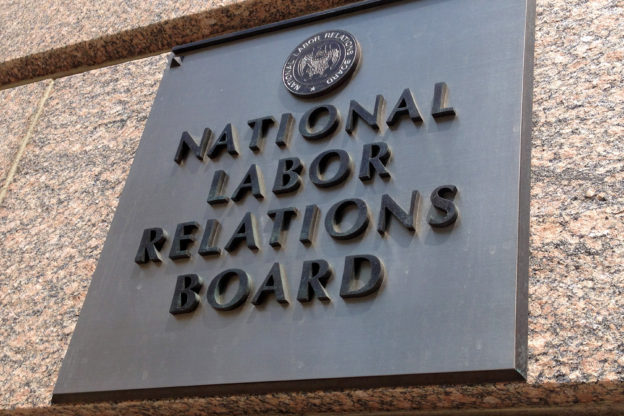 By Trey Overdyke
By Trey Overdyke
In early May, the Wyoming Department of Workforce Services (DWS) announced the launch of a new unit of safety advisers offering free health and safety consultations to Wyoming employers upon request. Does the launch mean Wyoming employers will soon have an additional layer of occupational safety and health staff to worry about? In this article, I will try to read the tea leaves and offer my perspective.
Focus on Injury Prevention, Workers’ Comp Trends
The DWS’s standards and compliance staff, in consultation with Governor Matt Mead, recently created the Workers’ Compensation Safety and Risk Unit (WCSRU). According to DWS Director John Cox, the new unit represents a “reorganization” that is designed to provide more employers safety consultations and offer the potential for lower workers’ compensation premiums.
The WCSRU is composed of nine recommissioned Wyoming Occupational Safety and Health Administration (WOSHA) consultation staff members. The WCSRU will focus on conducting workplace health and safety surveys without the risk of fines or penalties. The unit is also expected to offer detailed analysis of workers’ comp data to assist in identifying injury trends and developing best practices for preventing workplace injuries and illnesses.
Wyoming Has Highest Worker Death Rate in Nation
According to the U.S. Bureau of Labor Statistics (BLS), Wyoming had 37 workplace fatalities in 2014, the latest year for which statistics are available. With 13.1 fatalities per 100,000 workers, Wyoming has the highest worker death rate in the country. The national average for 2014 was 3.3 deaths per 100,000 workers. In Wyoming, transportation incidents accounted for the largest number of workplace deaths. Workplace violence, other injuries caused by persons or animals, and falls, slips, and trips caused deaths as well.
Because of the high fatality numbers, in 2015, legislators introduced bills designed to strengthen workplace safety regulations in Wyoming. Two of the bills would have increased penalties for violations of safety rules, including raising the maximum fine for a violation that causes a worker’s death to $250,000. Another bill would have allowed Wyoming to implement workplace safety rules that are stricter than similar federal safety rules, a practice that is currently barred. None of the bills passed.
WCSRU’s Role
As you know, WOSHA is responsible for enforcing occupational safety and health standards in Wyoming. WOSHA plans to adopt all federal Occupational Safety and Health Administration (OSHA) standards. WOSHA is permitted to adopt its own standards only if there are no corresponding OSHA standards. Wyoming has unique health and safety standards covering oil and gas well drilling, servicing, and special servicing as well as a standard for anchoring drilling rigs. WOSHA imposes the same record-keeping and reporting standards required by OSHA.
So the question is, how will the WCSRU interact with and affect the work of WOSHA staff? The new unit is expected to overlap with WOSHA in some ways. Both organizations’ staff will conduct health and safety surveys for employers to identify and remedy safety hazards in the workplace. However, according to the DWS’s news release, the WCSRU will bypass “time-consuming federal requirements, which add an extra layer of reporting and operational constraints . . . and limit the services [the] DWS is able to provide.”
Bottom Line
Several Wyoming agencies will be paying close attention to the WCSRU for the next few years. We expect to hear a number of success stories from Wyoming employers in many industries. However, read the fine print before initiating a consultation. If an employer and the WCSRU disagree on a hazard abatement, there does not appear to be a clear procedure to resolve the dispute. Further, if there is a dispute, you cannot eliminate the possibility that the WCSRU will refer the issue to WOSHA for enforcement.
We will share our experiences with the WCSRU as the unit works its way across Wyoming.
Click here to print/email/pdf this article.











 By
By  On July 13, 2016, the U.S. Equal Employment Opportunity Commission (EEOC) announced that it has revised its proposal to collect pay data from employers through the Employer Information Report (EEO-1). In response to over 300 comments received during an initial public comment period earlier this year, the EEOC is now proposing to push back the due date for the first EEO-1 report with pay data from September 30, 2017 to March 31, 2018. That new deadline would allow employers to use existing W-2 pay information calculated for the previous calendar year. The public now has a new 30-day comment period in which to submit comments on the
On July 13, 2016, the U.S. Equal Employment Opportunity Commission (EEOC) announced that it has revised its proposal to collect pay data from employers through the Employer Information Report (EEO-1). In response to over 300 comments received during an initial public comment period earlier this year, the EEOC is now proposing to push back the due date for the first EEO-1 report with pay data from September 30, 2017 to March 31, 2018. That new deadline would allow employers to use existing W-2 pay information calculated for the previous calendar year. The public now has a new 30-day comment period in which to submit comments on the